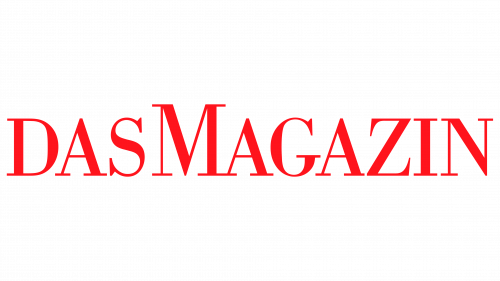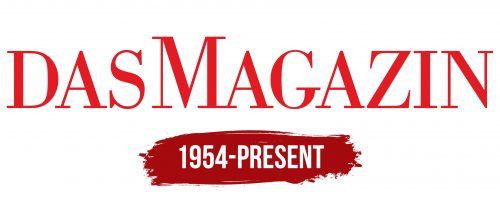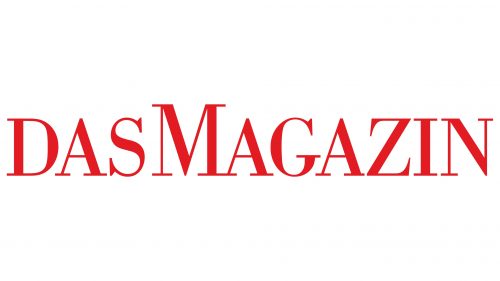The Das Magazin logo appears elegant and stylish, reflecting the refined taste and approach to the publication’s topics. This symbol focuses on a male audience as if speaking directly to readers interested in fashion trends, modern entertainment, women’s beauty, and the lifestyle of a successful man. The emblem gives the magazine a sense of prestige, setting it apart from other media, and its neat, carefully thought-out design enhances confidence, appealing to those who appreciate sophistication and relevance in every aspect of their lives.
Das Magazin: Brand overview
The history of Das Magazin began in East Germany (GDR) in 1954 as a literary and cultural journal aimed at an educated readership. Its creation was part of the GDR’s cultural policy, which promoted socialist art and culture.
The first issue was published in January 1954 and quickly gained popularity. Unlike many other GDR publications, this journal offered less ideological and more varied content. It featured articles on science, culture, the arts, literature, essays, and reports.
By the 1960s, it had become one of the most widely read periodicals in the GDR, with circulation reaching 200,000 copies—a significant achievement in a country with a population of around 17 million. Its visual style, particularly the frequent inclusion of photos of attractive models, also helped draw readers, which was notable given the GDR’s typically conservative culture.
The magazine maintained popularity throughout the 1970s, balancing compliance with censorship laws and providing readers with engaging and diverse content. Many of the GDR’s prominent authors and intellectuals contributed during this time, boosting its reputation as a respected cultural outlet.
In the 1980s, the publication adapted to growing social unrest in the GDR by including more articles on social issues. However, it continued to navigate the boundaries of what was acceptable to authorities, retaining a loyal readership.
The fall of the Berlin Wall in 1989 and the reunification of Germany in 1990 marked a significant turning point. Like many other former GDR publications, it faced competition from Western media and had to adapt to new economic realities.
Following its privatization in 1991, a new editorial team took over. This period was marked by efforts to modernize the layout and content while maintaining its core identity and audience.
The publication expanded its scope through the 1990s and 2000s, covering various topics, including modern lifestyles, social trends, and contemporary culture. It continued to publish high-quality literary and intellectual pieces, preserving its status as an intellectual magazine.
In 2004, the magazine celebrated its 50th anniversary, using the occasion to reflect on its long history and significance in German culture. A special edition highlighted the best content from its five decades of publication.
Like many print publications, the journal faced the challenges of the digital age in the 2010s. A website and digital edition were launched to attract new readers and stay relevant in an increasingly digital media environment.
By 2014, marking its 60th anniversary, the publication was still recognized as an influential cultural outlet in Germany. Special editions and events celebrated its enduring impact.
By 2020, it had maintained its identity as a respected cultural journal, adapting to the evolving media environment while upholding its commitment to high-quality journalism.
2021–2022, the publication continued to evolve, emphasizing digital media and reader engagement more. It actively participated in the cultural scene by organizing literary evenings, discussions, and exhibitions.
As 2023 approached, the magazine remained a significant voice in German culture. With nearly seven decades of history, it continues to blend tradition with innovation, evolving from a socialist-era publication to a contemporary cultural journal in unified Germany while preserving its reputation as a top-tier intellectual outlet.
Meaning and History
What is Das Magazin?
This is a Swiss cultural magazine that has carved out a unique place in the realm of German-language literary publications. It stands out for its bold editorial approach, combining intellectual news, innovative fiction, and thought-provoking articles. The magazine is known for covering a wide range of topics, from pop culture and art to politics and social issues, often sparking discussions and debates. A key aspect of this literary publication is its support for emerging writers alongside works from established authors. The magazine’s visual component adds special value, blending captivating photography with creative graphic design, making each issue collectible.
1954 – today
The magazine’s emblem features the name written in elegant red letters with elongated serifs. This style emphasizes that “Das Magazin” does not shy away from discussing “sharp” topics and supports biting humor and satire. The magazine was created to produce engaging and interesting press for the residents of the GDR, and its initial content included light reading: amusing stories, feuilletons, and humorous notes.
Interestingly, the name itself translates from German as “magazine,” which gives the publication a sense of universality. It is not tied to a specific topic or direction, which allows for content flexibility depending on the state’s political mood that subsidizes its issues. The absence of a precise name and clear direction hints at socialist simplicity and accessibility, as the magazine was created for workers, represented the culture of the new society, and was sold at a low price to be affordable to the masses.
It is worth noting that before the war, a magazine in Germany with a similar name was already dedicated to men’s erotica and artistic photography. It is possible that the publishers of “Das Magazin” deliberately chose this name to emphasize the changes brought by socialism, contrasting the new content with old values. They kept the name but filled it with an entirely different meaning, showing how much the country’s morals and culture had changed.





